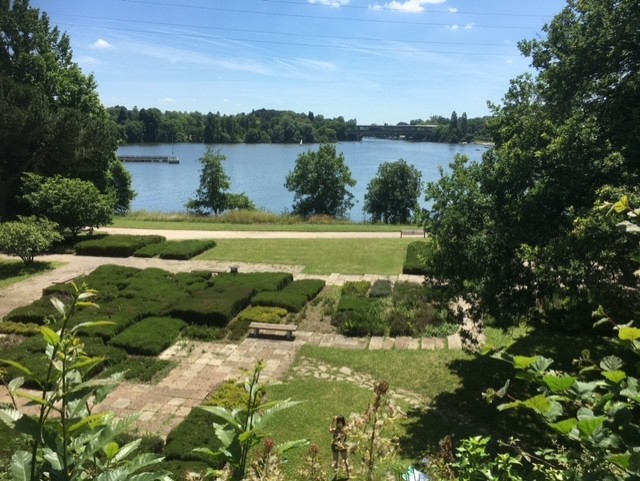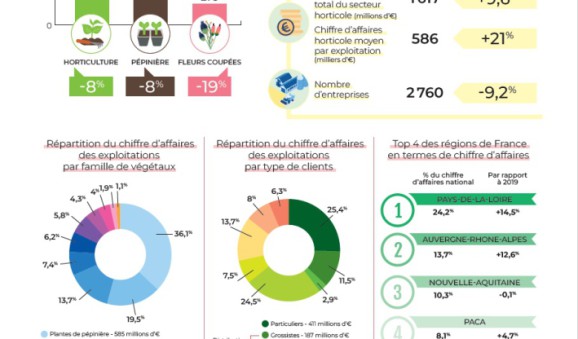FRENCH ARBORICULTURE SECTOR MOVES MORE ABROAD

Production in countries like the Netherlands, Belgium and Denmark has always far outstripped domestic demand, and these countries have long been forced to find outlets outside their own markets. This is why producers in northern European countries have for decades established effective commercial and logistical links with neighbouring countries. but French tree growers are now turning their attention somewhat abroad, writes our French correspondent Brand Wagenaar.
In France, local production is largely consumed by the domestic market, so plants and flowers had to be imported to meet demand, and this is still the case. So historically, there was no real need to go abroad to find outlets, which explains the negative reputation of a lack of commercial action. But since French distributors have tightened their buying conditions by grouping into very large buying centres, French growers have been looking more towards neighbouring markets, for which their nursery crops and perennials are attractive, diversified and well adapted to current climatic changes.
Very favourable production conditions
France has the advantage of a wide range of climatic typologies: Atlantic and Mediterranean coasts, continental and mountainous areas. Thanks to these varied typologies, many cultivated varieties have adapted and diversified by developing characteristics such as a reputation for early spring flowering, resistance to high temperatures and bad weather. Moreover, French know-how in plant selection, hybridisation, multiplication, propagation and cultivation goes way back in history and is still alive and kicking in the various production areas. Moreover, the land is still accessible, space is not limited, water sources are sufficient and of good quality, regulations are less restrictive than in northern countries and people still see nurseries as environmentally friendly businesses.
Plant quality
The French generally grow larger plants slower and longer and in larger containers, resulting in plants that are well rooted and do well after planting. The range includes a wide variety of perennials, with very specific, original and climate-resistant varieties. The assortments of young plants and nursery plants consist of selected varieties chosen to meet contemporary needs (such as Lagaerstromia, Choysia, Pythosporum, roses, Christmas trees and conifers), fruit trees and well-known collections of acid-loving plants (Rhododendron, Camellia, Hydrangea), aromatic and garden plants, strawberry plants, climbers for ornamental and small fruit and many other innovations.
Production in France
In France, many family businesses serve the local market. However, a number of companies have switched to more quantitative production, while modernising their means of production and maintaining the quality that remains the hallmark of French products (e.g. Pépinières Minier, for its varied and original production of trees and shrubs, and Pépinières La foret for their research into new varieties and production of young plants). The few companies that have focused on exports offer flowers and plants to the great satisfaction of their customers, and have often been doing so for several years. But for some time now, new players have been involved in exporting French flowers and plants. The individualism that used to characterise this type of production is giving way to a pooling and pooling of logistical and commercial resources. (such as the SICA Coopérative de Kérisnel, the Pépinières d'Ile de France or the group Pépinières de la région d'Orléans). Most of France's production of trees, shrubs and perennials is grown in the Loire Valley, central France and Brittany, but the groupings we see are also in the Rhône-Alpes region, southern France and the south-west. In 2021, the area under cultivation was 13,600 hectares in the open field, 2,250 hectares in containers and 1,500 hectares in greenhouses and tunnels.
https://www.ggp.news/images/news/infographie-observatoire-horticole_donnees-2021-and.pdf
Labels and certification are essential
Established in 2012 as a follow-up to the Grenelle Environmental Forum to encourage the transition to agroecology, the farm environmental certification is a voluntary, three-level certification system administered by the Ministry of Agriculture and the Ministry of Ecological Transition. The third level, the most demanding, recognises the "High Environmental Value" (HVE) of certified farms and their commitment to protecting biodiversity, reducing the use of plant protection products, rational management of fertilisers and economical management of water resources. It is based on performance commitments, measured by environmental performance indicators and verified during audits by a certification body. All major nurseries are already certified or in the process of certification.
Large and medium-sized cities, a fast-growing market
The greening of large and medium-sized cities° remains the most promising market for tree nurseries. Citizens are increasingly expressing the need for access to nature. Greening is also a priority for local governments, especially as it is one of the levers to adapt areas to climate change, by helping to reduce overheating of cities during heatwaves and limiting runoff due to soil fertilisation. Decision-makers and elected representatives have realised that urban green space is essential and no longer incidental. France has 25 large cities with between 2 million and 150,000 inhabitants and 250 medium-sized cities with between 100,000 and 50,000 inhabitants
Ornamental plants for private consumers
57% of households in France (nearly 30 million households) bought at least one outdoor plant in 2021, up 2 points from 2020. This performance can be explained by the urban exodus encouraged by the COVID-19 crisis. More than 76% of French people now have a terrace or garden, up 5% on 2020. But 2021 was a particularly exceptional year for ornamental plants, with 47% of French households buying ornamental plants, up 3 points from 2020. Unfortunately, inflation and concerns about climate fluctuations and the economic situation, as well as the various conflicts going on around the world, dampened this enthusiasm and sales of ornamental plants fell in 2022 and 2023, although still higher than for the pre-covidal period.
Conclusions
In France, horticultural production of urban and ornamental plants remains dynamic, with a number of large companies distinguishing themselves by responding to the expectations of local authorities and consumers in terms of social, environmental and economic responsibility.
Author: Brand Wagenaar
Brand Wagenaar is an expert analyst and expert on ornamental plant production and marketing in France

.jpg)
